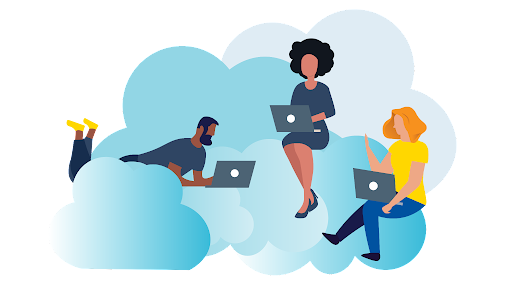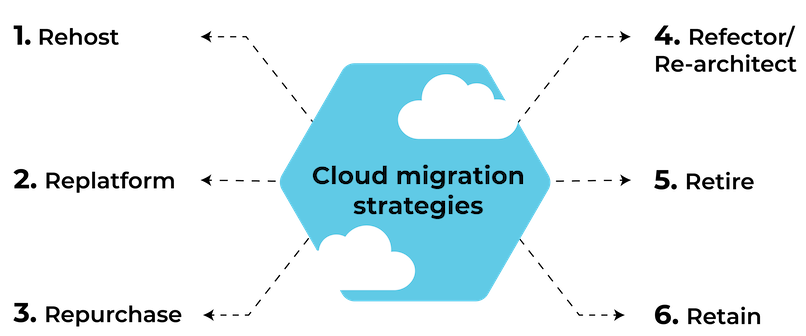Cloud migrations: How to enjoy a smooth transition towards the cloud

One of my favorite activities to enjoy during my free time is backcountry snowboarding – you get to move around amongst nature on the hike up, before enjoying some sweet twists and turns on the way down. But what exactly does the backcountry have to do with cloud technology?
One commonality is that there are a lot of known unknowns – and even more unknown unknowns! To look at it in its simplest form, snow conditions higher up are a known unknown; in the cloud analogy, we could consider this known unknown to be the foundational technologies you choose to begin with, for example.
Let’s compare cloud migration journeys and backcountry trips in greater detail. In order to have a successful and safe experience, there are some checklist items for both that you should be able to answer clearly.
1. Where are you headed?
When traversing the backcountry, one should always have a thought of where you’re going. Is it a long trip or a short trip? Will there be heavy terrain or easy terrain? Answering these questions helps you to prepare and pack what you need for each specific trip. In other words, what do you want to achieve and what is the purpose of the activity?
Summarize your mission statement into a clear and concise overview so that you can easily share it with people and remind yourself why you’re taking on the project in the first place. This does not mean that you don’t have to plan things out in a detailed way, but rather it enables you to crystallize what exactly is going to take place – and why. If you lack purpose and/or motivation, it can be hard to get others to work with you – especially when you should all be on the same page with what is expected to happen.
2. What equipment do you plan to use?
For backcountry trips my platform is a splitboard. But for cloud, the platform is usually something in the form of public cloud vendor services, or a self-managed technology stack running on a public cloud infrastructure. There is also the possibility that you’re in a situation where you require several different platforms, e.g. a multi-cloud environment.
3. Get to know and understand the team you’re headed out with
In backcountry snowboarding, there’s no better way to learn and safely undertake the journey than by going out with a team of people who already know the terrain and have experience with such trips.
Reading books, blogs, and going through training courses are of course highly valuable additions, but they do not always fully prepare you for what might lay ahead – not to mention how you should react when something unexpected comes your way. It is quite common for all members of the team going on the journey to carry out a conscious or unconscious “sizing up” of the crew in order to ensure that its composition is correct for the planned trip.
Should you have inexperienced people or no team members who are familiar with the exact area in which you’re going to be moving, it might be wise to either lower your expectations of what you will achieve, or hire a local guide.
These same principles apply in the case of cloud migrations: even if you have professionals that are familiar with your workloads and services, there may still be a high number of risks involved if that team does not have dedicated experience on the technologies you’re about to move into.
4. What’s the planned route?
Once you know what you want to do, why you’re doing it, and who is going to be part of the activity, you then need to do some route planning.
There are several ways and strategies to get from A to B. In backcountry snowboarding, you could choose to go straight up, or opt for a slower, less exhaustive zigzag route up. With cloud migration, you might first look into the different types of workloads and services before lining them up on a roadmap.
These are the six Rs of cloud migration which offer guidance on strategic classification of application cloud migration:

1. Rehost – lift and shift
Move existing workloads to a cloud without making any changes to the solution architecture or applications. A straightforward migration that still offers benefits in terms of cloud economics and advantages of running services from a highly scalable, available, and secure environment.
2. Replatform – lift, tinker, and shift
This is a similar move to rehosting, but with some changes and/or updates made to applications in order to gain further immediate benefit. Usual activities under the "tinker" term would be moving to use managed databases or a CMS.
3. Repurchase
Take a deep dive into how you purchase software and applications, creating a detailed strategy on cost, benefits, and available options. A simple example is moving from license-based applications to SaaS solutions.
4. Refactor / rearchitect
Make the move to become cloud native by rearchitecting current solutions to make the most of the cloud using up-to-date best practices and solutions, while also redefining the applications themselves to meet business goals. Refactoring is a bigger effort, but offers major benefits and future-proofing.
4. Retire
Create an understanding of what applications you run, what is their purpose, and whether there is a better option for something that can otherwise be fully retired. There are usually redundant or completely outdated components in application selection if frequent strategic evaluation is not in place.
6. Retain
In some instances it might be good to just acknowledge that certain workloads or services are better to leave as they are. However, it’s important to remember that this still requires a professional understanding of why this is the right decision to take in the bigger picture of cloud migration, and whether that could change in the future.
5. Conditions and risks
As with everything in life and work, there are always risks involved. In backcountry snowboarding, risks can vary wildly from small incidents and breakages to getting yourself into a life and death situation – one can never fully avoid all of the risks involved.
With regards to cloud migration, the huge advantages and opportunities also bring a significant risk of complications and unforeseen events. The best way to mitigate against these and ensure a successful migration is to have a clear vision, leaning on up-to-date best practices and solutions, and working with the right team who are experienced in what lies ahead.
Discover how Eficode can help you reach your cloud migration.
Published:
Updated:


